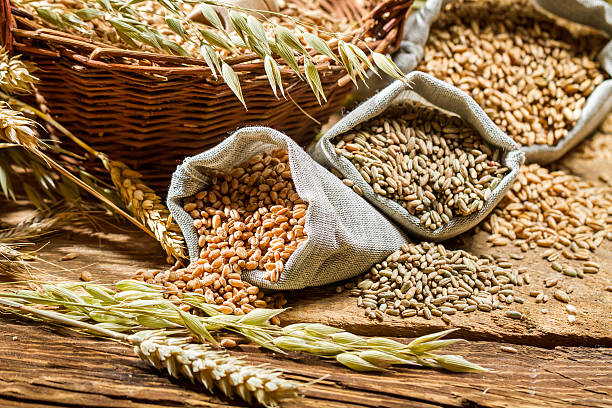Table of Contents
Introduction
Insulin resistance is a growing concern in women’s health, often going unnoticed until significant health issues arise. Understanding insulin resistance in women is essential for early intervention, management, and prevention of conditions like type 2 diabetes, heart disease, and other metabolic disorders. In this blog, we’ll delve into what insulin resistance is, why women are particularly vulnerable to it, and how it affects overall health. We’ll also explore practical steps for managing insulin resistance and improving health outcomes.
What is Insulin Resistance?
Insulin resistance occurs when the body’s cells become less responsive to insulin, a hormone produced by the pancreas that helps regulate blood sugar levels. As a result, the body needs more insulin to process glucose effectively, which can lead to higher blood sugar levels and, over time, the development of type 2 diabetes.
How Insulin Resistance Develops
When the body experiences insulin resistance, the pancreas compensates by producing more insulin. However, over time, the pancreas may struggle to keep up with the increased demand. As a result, blood sugar levels can rise, leading to symptoms of diabetes.
Why Are Women More Prone to Insulin Resistance?
While insulin resistance affects both men and women, research shows that women may face unique challenges in managing this condition. Hormonal fluctuations, pregnancy, and menopause can influence how a woman’s body responds to insulin, making women more susceptible to developing insulin resistance at certain life stages.
Hormonal Imbalance and Insulin Resistance
The female hormones estrogen and progesterone play a significant role in regulating metabolism. A decrease in estrogen levels, especially during menopause, can lead to an increase in abdominal fat and a higher risk of developing insulin resistance.
Pregnancy and Insulin Resistance
During pregnancy, some women develop a temporary form of insulin resistance known as gestational diabetes. While it typically resolves after childbirth, it increases the likelihood of developing type 2 diabetes later in life.
Risk Factors for Insulin Resistance in Women
Understanding the risk factors for insulin resistance in women can help with early detection and prevention. Some of the common risk factors include:
- Genetics: A family history of diabetes or metabolic disorders increases the likelihood of developing insulin resistance.
- Age: As women age, particularly after menopause, the risk of insulin resistance increases.
- Obesity: Excess weight, especially abdominal fat, is strongly linked to insulin resistance.
- Polycystic Ovary Syndrome (PCOS): Women with PCOS are at higher risk of developing insulin resistance.
- Sedentary Lifestyle: Lack of physical activity contributes to weight gain and insulin resistance.

Symptoms of Insulin Resistance in Women
Insulin resistance often develops silently, with few noticeable symptoms. However, several early warning signs can indicate the presence of this condition:
- Fatigue: Feeling constantly tired or sluggish, despite adequate rest.
- Increased hunger: A craving for sugary or high-carbohydrate foods.
- Weight gain: Particularly around the abdominal area.
- Difficulty losing weight: Despite dieting and exercising.
- Darkened skin patches: Known as acanthosis nigricans, these patches usually appear on the neck, armpits, or groin.
If you experience any of these symptoms, it is essential to consult with a healthcare provider for proper testing and diagnosis.
Managing Insulin Resistance in Women
Effective management of insulin resistance is crucial in preventing the development of more severe health conditions. Here are some strategies to help manage insulin resistance:
Healthy Diet Choices
A well-balanced diet can significantly impact insulin sensitivity. Women with insulin resistance should focus on eating nutrient-dense foods while avoiding processed sugars and refined carbohydrates. Incorporating more fiber, healthy fats, and lean proteins can help regulate blood sugar levels.
- Include whole grains: Opt for brown rice, quinoa, and oats instead of white rice or white bread.
- Eat more vegetables: Leafy greens, cruciferous vegetables, and colorful vegetables provide essential nutrients.
- Limit sugary foods: Cut down on foods like candy, soda, and baked goods that are high in sugar.

Regular Physical Activity
Exercise is one of the most effective ways to manage insulin resistance. Physical activity helps improve insulin sensitivity, promotes weight loss, and reduces inflammation.
- Aim for at least 150 minutes of moderate-intensity exercise each week.
- Incorporate strength training to build muscle, which helps the body process glucose more efficiently.
- Focus on aerobic exercises, such as walking, jogging, or cycling, to help regulate blood sugar levels.
Medication and Medical Intervention
For some women, lifestyle changes may not be enough to manage insulin resistance. In these cases, healthcare providers may recommend medications like metformin to help improve insulin sensitivity and regulate blood sugar levels. Regular check-ups and blood tests can help monitor progress and adjust treatment as needed.

The Link Between Insulin Resistance and Other Health Conditions
Insulin resistance is often associated with several other health issues that disproportionately affect women. These include:
- Heart Disease: Insulin resistance is a significant risk factor for cardiovascular disease, as it can lead to high blood pressure, high cholesterol, and an increased risk of atherosclerosis.
- Type 2 Diabetes: Women with insulin resistance are at a higher risk of developing type 2 diabetes, especially if they have a family history of the condition.
- Polycystic Ovary Syndrome (PCOS): PCOS and insulin resistance often go hand-in-hand. Women with PCOS may struggle with weight management, irregular periods, and difficulty getting pregnant.
- Fatty Liver Disease: Insulin resistance can contribute to non-alcoholic fatty liver disease (NAFLD), a condition where fat accumulates in the liver.
Call to Action
Taking proactive steps to manage insulin resistance is essential for maintaining overall health and preventing the development of more serious conditions. By making informed decisions about diet, exercise, and lifestyle, women can manage insulin resistance effectively. If you’re experiencing symptoms or are concerned about your risk, reach out to a healthcare provider for personalized advice and care.
Frequently Asked Questions
What is insulin resistance in women?
Insulin resistance in women occurs when the body’s cells become less responsive to insulin, leading to higher blood sugar levels. This condition can increase the risk of developing type 2 diabetes and other metabolic disorders.
How do I know if I have insulin resistance in women?
Common signs include fatigue, weight gain, increased hunger, and difficulty losing weight. A healthcare provider can diagnose insulin resistance through blood tests that measure blood sugar and insulin levels.
Can insulin resistance in women lead to diabetes?
Yes, untreated insulin resistance can lead to type 2 diabetes. However, with proper management through lifestyle changes and medication, the risk of developing diabetes can be significantly reduced.
How can women manage insulin resistance effectively?
Managing insulin resistance involves making healthy dietary choices, engaging in regular physical activity, and, in some cases, taking prescribed medications. Monitoring blood sugar levels and regular check-ups are also important.
Is insulin resistance in women reversible?
While insulin resistance can often be managed and even improved with lifestyle changes, it is not always fully reversible. However, adopting a healthy lifestyle can help prevent further complications and improve overall well-being.



